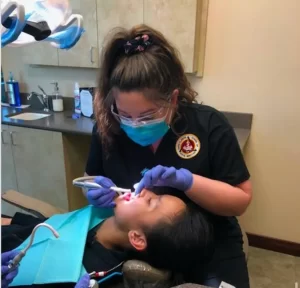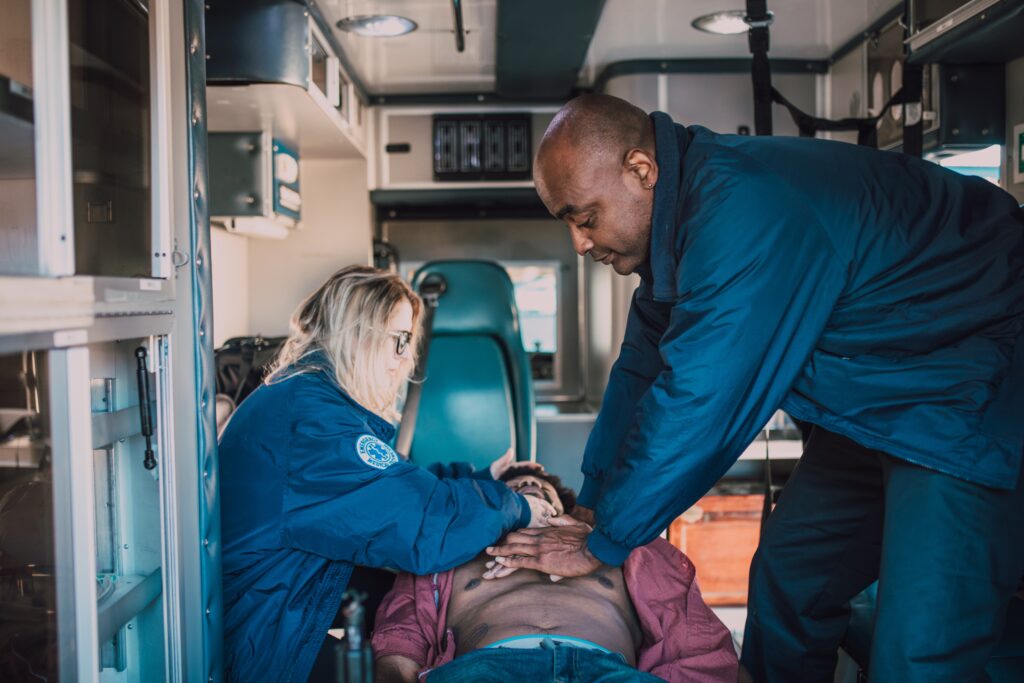CPR At Santa Clarita School of Dental Assisting
At Santa Clarita School of Dental Assisting, you will learn a multitude of things from infection control to radiology and coronal polishing. However, one of the most important things you will learn is CPR. The state of California requires dentists, hygienists, and dental assistants to receive certification for basic life support (BLS) and CPR. Additionally, it’s also an important skill to have outside of work too.

What is CPR?
CPR stands for cardiopulmonary resuscitation. CPR is an emergency lifesaving procedure performed when the heart stops beating. Every year 475,000 people die from cardiac arrest in the Unites States. Having some one around who knows CPR can help double or triple chances of surviving cardiac arrest.
CPR is designed to keep oxygenated blood flowing to the heart and brain when Sudden Cardiac Arrest (SCA) occurs. Because the heart can’t pump blood, tissue and organ death can occur in minutes without external assistance.
At Santa Clarita School of Dental Assisting, you’ll learn how to perform CPR and become certified. We also have an AED that you will learn to use and operate. Below is a video of some of our student’s learning CPR.
What is an AED?
AED stands for Automated External Defibrillators. An automated external defibrillator is a portable electronic device that automatically diagnoses the life-threatening cardiac arrhythmias of ventricular fibrillation (VF). It pulseless ventricular tachycardia,[1] and is able to treat them through defibrillation, the application of electricity which stops the arrhythmia. This allows the heart to re-establish an effective rhythm.
The portable version of the defibrillator was invented in the mid-1960s by Frank Pantridge in Belfast, Northern Ireland. Below is a video explaining AED’s.
Advantages to Knowing CPR
Below are some advantages to knowing CPR:
- Cardiac arrest is the # 1 killer worldwide.
- Most Sudden Cardiac Arrests (SCA’s) occur at home, 69.5%.
- 8% SCA’s occur in public.
- As many as 475,000 Americans a year die from SCA’s.
- American Heart Association noted that SCA’s claim more lives per year worldwide than cancers, auto accidents, influenza, HIV, firearms, and house fires combined.
- Most Cardiac Arrest victims don’t survive. 90% mortality rate for out-of-hospital cardiac arrest victims.
- CPR can quadruple a person’s odds of surviving cardiac arrest.
- You might save someone you love.
CPR is great and an important skill to have as a dental assistant for work purposes, but it can also be incredibly helpful for your everyday life. Consider that almost 70% of SCA’s happen at home. While it can be scary to see someone suddenly start to suffer from Cardiac Arrest, you’ll be ready if that moment ever arrives, and you’ll be key in saving someone’s life.
Cardiac Arrest VS Heart Attack.
Undoubtedly, it can be easy to confuse these two since it involves complications of the heart.
What is Cardiac Arrest? It occurs when the heart malfunctions and stops beating unexpectedly. Cardiac arrest is an “ELECTRICAL” problem.
What is a Heart Attack? A heart attack is a “CIRCULATION” problem. Occurring when blood flow is blocked.
Dental Assisting & CPR Conclusion
Hopefully this article was informative. To that end, if you’re considering attending a Dental Assisting School, then look no further. Our school has been voted #1 Career College multiple times. We are a very hands-on school with small classes.
Our course was designed by a Dr. Kelly Smudde. A lot of the hands-on learning is in our dental practice. We encourage you to take a free tour, come and check out our school, ask questions. Don’t just take our word for it check out what our students have to say about us here.
